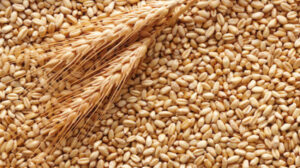
Raiffeisen Bank (Kyiv) has opened its first underground branches in Kharkiv and Dnipro, the bank’s telegram channel reported on Friday.
As specified, the underground branches will operate on the basis of existing ones and will serve customers in case of an air alert. Customer service is already available through a separate entrance leading to the underground premises.
“Underground workplaces allow us to ensure continuity of customer service even in the event of air raids. This is especially important in cities that are subject to constant shelling, which is why branches are forced to stop working on the surface for a rather long time,” Artem Nidzelsky, Retail Business Director of the center of the bank’s southeastern region, said in a statement.
According to him, the continuous operation of the branches allows to support local businesses and provide access to financial services. This, in turn, helps to minimize economic losses for entrepreneurs and the population.
“It is also extremely important that the new initiative creates safer working conditions for employees, allowing them to work more confidently and with less stress,” emphasized Nizelsky.
Underground branches provide all banking services as well as traditional branches, including account opening, deposits, lending, customer consultations and cash payments.
Raiffeisen Bank explained that the first underground bank branches appeared in cities located near the hostilities and constantly under fire. The number and duration of air raids in these cities is increased, customers have limited access to offline services and frequent problems with stable communication.
This step is expected to help maintain economic stability in the frontline regions, preserve customer confidence and provide a sense of stability and security when using banking services, which is especially important in wartime.
In the future, the bank plans to open separate underground branches in Kharkiv, Dnipro and other frontline cities.

In the first half of 2024, Nova Poshta LLC increased its consolidated net income by 22.6% to UAH 24.45 billion compared to the same period last year, but its consolidated net profit decreased by 36.9% to UAH 1.48 billion.
According to the consolidated financial statements published in the disclosure system of the National Securities and Stock Market Commission (NSSMC), the company’s gross profit in January-June 2024 increased by 10.1% to UAH 6.05 billion.
It is noted that the profit from operating activities of Nova Poshta for the reporting period decreased by 9.2% to UAH 3.17 billion.
It is noted that investment expenditures on non-current assets increased by 20% to UAH 3.54 billion, and another UAH 70 million was spent on the purchase of a subsidiary. Although the cash balance for the first half of the year decreased from UAH 6.55 billion to UAH 5.39 billion, it was higher than a year earlier (UAH 4.47 billion).
As reported, Nova Poshta increased its unconsolidated net income by 20.1% to UAH 20.12 billion in the first half of 2024, while the company’s net profit decreased by 38.1% to UAH 1.49 billion.
“Nova Poshta is the largest logistics operator in Ukraine. From the beginning of 2024 to the end of July, the company expanded its network in the country from 26.6 thousand to 30.1 thousand points: 12.1 thousand branches and 18 thousand post offices.

Globus Bank has issued the first loan for the purchase and installation of solar power plants in apartment buildings with a capacity of 30 kWh under the 5-7-9 program, the bank’s press service reports.
The borrower is Greenwood Housing Association (Lviv region, village of Bryukhovychi), which serves two apartment buildings with 50 apartments. The loan amount was UAH 1.23 million and the maturity was 3 years, with no down payment and no collateral.
According to the terms of the 5-7-9 program for condominiums, the compensation rate for the loan is 7% for the first year of repayment. Subsequently, the rate will depend on the base interest rate (the Ukrainian index of rates on retail deposits), but will not exceed 20% per annum.
Yulia Svyrydenko, First Vice Prime Minister and Minister of Economy of Ukraine, said that due to the expansion of the “Affordable Loans 5-7-9%” program, condominiums and housing cooperatives can apply to one of 46 authorized banks and receive a loan of up to UAH 5 million for up to 5 years at 7% per annum.
“Since the beginning of the summer, twenty Ukrainian banks, both state-owned and private, have approved UAH 4.3 billion worth of loans (for condominiums and housing cooperatives) under all programs,” she said.
According to Olena Pasternak, the head of Greenwood Housing Association, the complex is also a participant in the Grindim program, which guarantees reimbursement of up to 70% of the costs of equipment for solar power plants. In addition, the condominium will receive 30% of the loan amount as part of the Program for reimbursement of part of the loans received by condominiums and housing cooperatives for the implementation of energy saving measures, reconstruction and modernization of apartment buildings in Lviv in 2015-2025.
According to Serhiy Mamedov, Chairman of the Board of Globus Bank, a loan for the purchase and installation of autonomous solar power plants is also a profitable investment for those condominiums that are not members of the Grindim program or compensation programs from local authorities, as the payback period for solar power plants can be up to four years.
For example, at 7% interest rates for the first year of the loan and theoretically maximum rates for 2-3 years of loan repayment (up to 20% per annum), the total loan amount for the installation of a 30 kWh SPP for a standard apartment building with 100 apartments will be about UAH 1.8 million. That is, the financial burden for the installation of a solar power plant for each apartment will be equal to UAH 18 thousand, which is only UAH 500 per month. Taking into account the July tariff increase, the average cost per apartment for electricity, including the installation of a solar power plant, will be up to UAH 2 thousand per month.
“Energy loans for condominiums can become a real mainstream, as it is a way to complete energy independence. In addition, the high payback period will encourage condominiums to participate more actively in energy lending programs,” Mamedov summarized.
Globus Bank was registered in 2007. According to the NBU, as of April 11, 2023, the bank’s shareholders were Elena Silnyagina (100%), Dmitry Polkovsky (16.198866%), Yevgeny Varyagin (9.899307%), Sergey Mamedov (9.899307%), Andrey Pinchuk (9.899307%) and Taras Lisovoy (3.599748%), who indirectly own the authorized capital.
According to the National Bank of Ukraine, as of May 1, 2024, Globus was ranked 26th (UAH 9.4 billion) among 60 banks operating in the country in terms of total assets. As of April 2024. The regional network includes 31 branches.

As of August 22, farmers in all regions of Ukraine have already harvested 31.955 million tons of new crops from 6.759 million hectares, the Ministry of Agrarian Policy and Food reported on Friday.
According to the report, more than 28.595 mln tons of grains and 3.36 mln tons of oilseeds have been harvested.
APK-Inform analysts pointed out that only about 46 thou hectares were threshed during the week. The temporary slowdown of the harvesting campaign dynamics can be explained by the fact that the harvesting of two key grain crops (wheat and barley) is almost completed, while the corn threshing has not yet started, the experts noted.
It was specified that 21.74 million tons of wheat were harvested from 4.86 million hectares at a yield of 44.7 c/ha, 5.5 million tons of barley from 1.4 million hectares at a yield of 39.2 c/ha, and 458.5 thousand tons of peas. tons from 207.6 thousand hectares at a yield of 22.1 c/ha, buckwheat – 4.3 thousand tons from 6.2 thousand hectares at a yield of 14.4 c/ha, millet – 11.91 thousand tons from 20.4 hectares at a yield of 17.9 c/ha. Other grains and legumes were harvested in the amount of 882.8 thou tons from 277.3 thou hectares at a yield of 32.4 c/ha.
Ukraine continues to harvest oilseeds. In particular, 3.4 mln tons of rapeseed have been harvested from 1.23 mln hectares with a yield of 27.4 c/ha and 7.2 thou tons of soybeans from 6.6 thou hectares with a yield of 10.9 c/ha. Sunflower was harvested in the amount of 51.7 thou tons from 0.2 thou hectares with a yield of 11.1 c/ha.
Agrarians in a number of regions started digging sugar beets. They harvested 7.2 thou tons of sugar beet from 0.2 thou hectares with a yield of 360 c/ha.

Indian Prime Minister Narendra Modi arrived in Kyiv on the morning of Friday, August 23, the press service of Ukrzaliznytsia reports.
“For the first time in the history of bilateral relations between our countries, the Prime Minister of India personally visited Ukraine. Before his visit to Kyiv on a Ukrzaliznytsia train, Narendra Modi called India a “friend and partner” of Ukraine and expressed hope for a “speedy restoration of peace” and deepening of “Indian-Ukrainian friendship,” the press service said in a Facebook post.
Modi was met by First Deputy Foreign Minister of Ukraine Andriy Sybiga and Director of the State Protocol Department Olena Yalova.
According to The Times of India, during the visit, Modi will share with Ukrainian President Volodymyr Zelenskyy the prospects for a peaceful resolution of the current conflict.
The publication also published footage of Modi’s motorcade in the center of Kyiv.
Ukrainian media published a video of Modi’s meeting with the Indian diaspora in a central Kyiv hotel.
This is the first visit of the Indian Prime Minister to Ukraine since the country gained independence in 1991.

The shareholders of Ovostar agricultural holding have approved the proposal of the Board of Directors to abandon the payment of dividends based on the results of 2023 and allocate the entire net profit of $44.975 million to the retained earnings reserve.
According to the company’s announcement on the Warsaw Stock Exchange, the decision was made at the annual shareholders’ meeting on Wednesday, with 95.05% of the shareholders participating.
The general meeting decided to approve and accept the financial statements and the independent auditors’ report thereon.
In addition, it approved the reappointment of Markiyan Markevych as a non-executive director of the company.
The total remuneration paid to the directors of the agricultural holding during the year ending December 31, 2024, was set by the shareholders at an amount not exceeding EUR 500 thousand.
All directors of Ovostar from all management actions and any liability in relation thereto during the financial year ended December 31, 2023.
The shareholders also authorized the Board of Directors of Ovostar to hold a tender for the selection and appointment of the independent auditors of the agricultural holding for the financial year 2024 and to determine their remuneration.
Ovostar Union is one of the leading producers of eggs and egg products in Ukraine. “In 2023, Ovostar increased its net profit by 7.4 times to $45 million, EBITDA by 4.5 times to $50.4 million, and revenue by 20% to $162.5 million.
In mid-June 2011, the group’s holding company, Ovostar Union N.V., conducted an IPO of 25% of its shares on the WSE at PLN62 per share ($22.78 at the then exchange rate) and raised $33.2 million.
At the end of May this year, the owners of 65.93% of the shares announced that together with Fairfax Financial Holding they had accumulated 95.45% of the agricultural holding and were ready to buy out the remaining 4.55% of the shares held by minority shareholders. During the announced voluntary buyout at a price of PLN70 per share (about $17.5), they acquired another 56,027 shares, or 0.934%, and now own 96.383%.
“The offerors intend to exercise the squeeze-out right … in order to acquire 100% of the company’s shares at a price of PLN70 per share,” Ovostar said in early July, recalling its delisting plans.
Before the trading was suspended, Ovostar shares were listed at PLN68.4 per share, and after the announcement of the Cypriot regulator’s approval of the squeeze-out in early August, the price dropped by 1.44%.